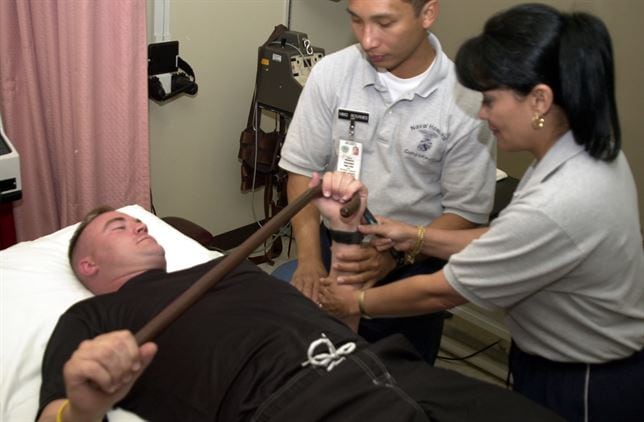Muscle strains and sprains can strike anyone at any time, no matter what you do for a living. It can affect overactive gym enthusiasts, those who are averse to gyms, the young, the elderly and everyone in between. Pills can offer relief to some but for most others, the pain tends to come back even when the injured part heals, mostly due to muscle weakness. This is where physiotherapy helps. Physiotherapy treats the symptoms, reduces pain and strengthens the weakened muscles to prevent a recurrence.
How is a Strain Different from a Sprain?
Although the two words rhyme and have many letters in common, there is a marked difference between the two.
- Strain: A strain occurs when the muscle or tendon that connects the muscle to the bone stretches, causing wear and tear.
- Sprain: A sprain is when the ligament stretches, causing wear and tear. A ligament is the tissue that fuses two bones together. Strains can occur in the hamstrings, quadriceps, groin or calf muscles in the lower half of the body. In the upper half, they can affect the biceps, rotator cuff muscles and shoulders.
Physiotherapy for Strains and Sprains
Both are excruciatingly painful and hard to heal completely. A physiotherapist assesses the degree of the injury, then classifies the strain in three categories based on the severity – 1st, 2nd, 3rd degree pains. Next follows the treatment plan addressing the issue, based on the location and severity of the injury, the patient’s medical history and lifestyle habits.
Along with short-term therapies to reduce pain, long-term rehabilitation programs are also established that includes guidance, educational information to understand preventive measures and avoid future injuries.
Supplemental Therapies
Physiotherapy is often supplemented by other healing techniques to quicken the process, such as massage therapy, electrotherapy, ultrasound and interferential current if it is chronic. Heat or cold press is applied to boost blood flow to the area to decrease inflammation and swelling. Therapeutic tapes are beneficial to provide compression and support to mobility. Manual stretching at home helps strengthen muscle flexibility. Strength exercises help regain muscle function and prevent future injury.
R.I.C.E – Rest, Ice, Compress, Elevate
If you or anyone you know happens to strain or sprain a muscle or ligament, follow the R.I.C.E protocol – rest, ice, compress, elevate. Rest out a couple of days to allow time for healing, If the pain is aggravated over the next couple of days or does not improve much, visit a physiotherapist without further delay.
Pro Fusion Rehab is a private physiotherapy clinic in Milton and Pickering, Ontario. We work with acute and chronic stages of pain, including strains and sprains related to sports, work and accidents. Browse our website to learn about our comprehensive services.
